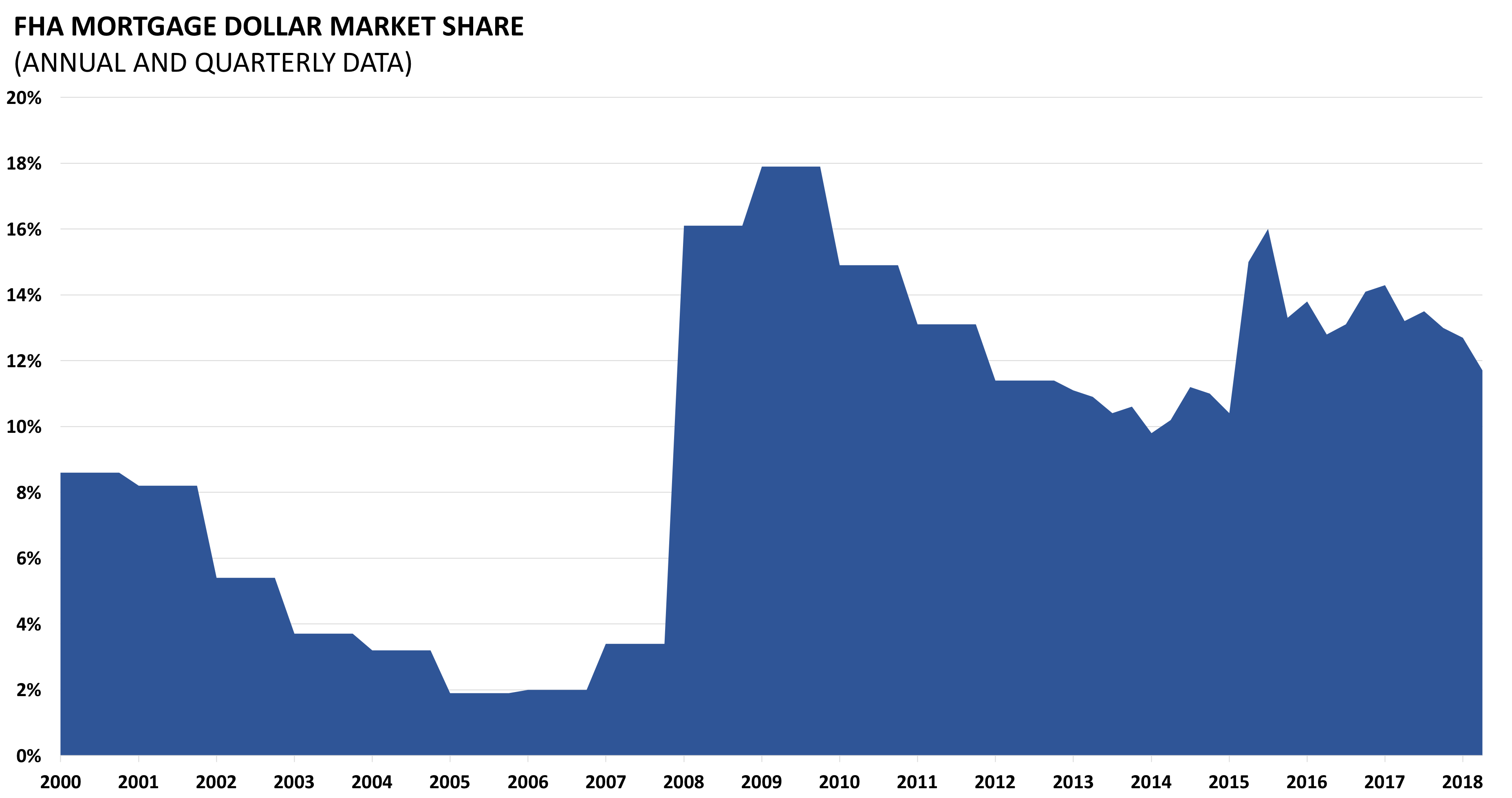The Daily Dish
December 14, 2018
Housing Finance Reform in One Picture
Eakinomics: Housing Finance Reform in One Picture
AAF has released the latest edition of its Housing Chart Book, a great way to track the evolution of the housing market. Among the many nuggets, one particular chart stood out this time (at least for me): The “FHA Mortgage Dollar Market Share” (reproduced below). The chart shows the recent history of the share of the dollar value of mortgages on single family homes that are insured (guaranteed) by the Federal Housing Administration.
It is interesting to compare the movement in the share from 2001-2005 to the most recent few years. As the economy recovered from the 2001 recession, which officially ended in November 2001, the share dropped from the vicinity of 8 percent to roughly 2 percent. That makes sense; with incomes rising there should be less need for a government backstop of mortgages to lower-income Americans. Note, however, that in 2017-2018 the share remains elevated at roughly 12 percent – albeit down from the peak of 18 percent. (A similar picture would be seen for the housing government-sponsored enterprises (GSEs) Fannie Mae and Freddie Mac.)
What is going on? One potential explanation is the weak recovery. Although the 2010-2016 period yielded rising employment, there was little real wage growth. So, perhaps for the vast majority of workers who had a job throughout the Great Recession, there was not enough improvement in their prospects. Alternatively, it could be that policy decisions by the FHA effectively crowded out the use of private mortgage insurance, leaving the U.S. taxpayer as the continued backstop for under-performing mortgages.
The latter scenario reminds us of the need for fundamental reform of the U.S. system of mortgage finance. Fannie Mae and Freddie Mac remain in conservatorship, the government remains too large a presence in the mortgage market, and any change to FHA policies should be coordinated with the policy of whatever replaces the GSEs. This should be a top priority for Congress in 2019.
Fact of the Day
Overdose deaths involving illegal synthetic opioids rose nearly 50 percent in 2017, accounting for nearly the entire rise in all opioid overdose deaths.











